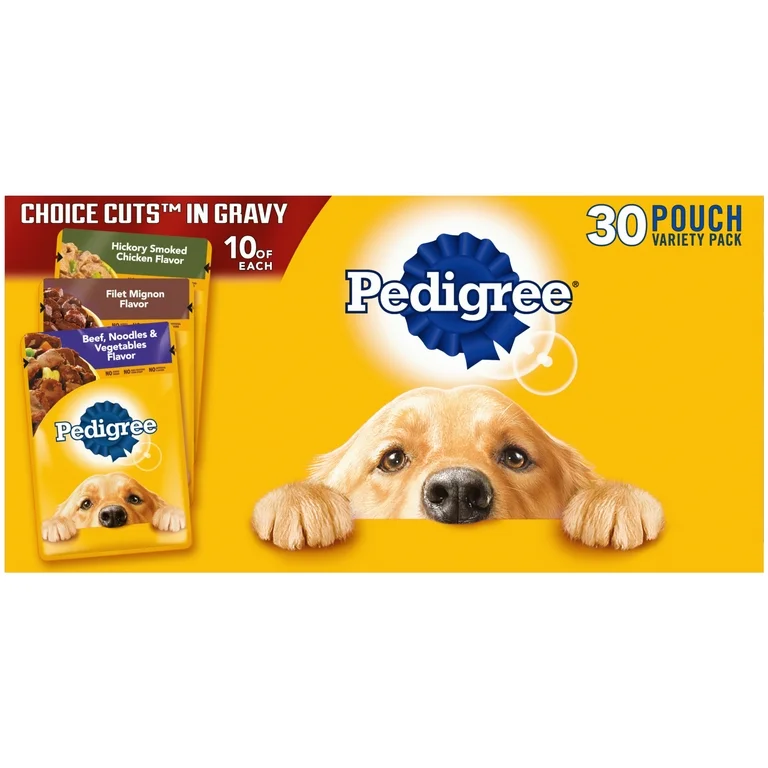Table of Contents
Ensuring your dog gets the best nutrition is one of the most important responsibilities as a pet owner. Many commercial dog foods have fillers, artificial preservatives, and low-quality ingredients. These may not offer the best health benefits.
If you’re looking for healthy dog food alternatives, this guide will help you understand the best options for your furry friend. From homemade meals to natural store-bought alternatives, we’ll explore everything you need to know to keep your dog happy and healthy.
Why Consider Healthy Dog Food Alternatives?
Many dog owners assume that commercial dog food is the best option, but not all brands offer high-quality nutrition. Some common concerns with traditional dog food include:
- Low-quality ingredients: Many brands use fillers like corn, soy, and wheat, which provide little nutritional value.
- Artificial additives: Preservatives, artificial flavors, and colors can cause allergies and digestive problems.
- Unbalanced nutrition: Some brands lack essential vitamins, minerals, and proteins necessary for a dog’s overall well-being.
Switching to healthy dog food alternatives can help improve your dog’s digestion, energy levels, and overall health.
Homemade Dog Food: A Natural and Nutritious Option
One of the best ways to ensure your dog gets the right nutrition is by preparing homemade meals. Here are some safe and nutritious ingredients to include in your dog’s diet:
1. Lean Protein Sources
Protein is essential for muscle growth and repair. Great options include:
- Chicken (boneless and skinless)
- Turkey
- Beef
- Fish (salmon, sardines, and mackerel for omega-3s)
- Eggs (cooked)
2. Healthy Carbohydrates
Carbs provide energy, but they should come from nutritious sources like:
- Brown rice
- Sweet potatoes
- Oatmeal
- Quinoa
3. Vegetables for Vitamins and Fiber
Not all vegetables are safe for dogs, but the following provide essential nutrients:
- Carrots (rich in vitamin A)
- Spinach (contains iron)
- Broccoli (loaded with antioxidants)
- Pumpkin (great for digestion)
4. Healthy Fats
Fats support brain health, skin, and coat condition. The best sources include:
- Coconut oil
- Olive oil
- Flaxseeds
- Fish oil
Best Store-Bought Healthy Dog Food Alternatives
If you prefer ready-made options, look for brands that prioritize quality ingredients. Some key factors to consider when selecting healthy dog food alternatives include:
- Grain-free options: Ideal for dogs with allergies or sensitivities.
- No artificial additives: Avoid foods with artificial flavors, colors, or preservatives.
- High protein content: Look for at least 25% protein from real meat sources.
- Limited ingredients: Simple recipes help reduce the risk of food allergies.
Recommended Brands
Some reputable dog food brands that prioritize healthy ingredients include:
- Blue Buffalo Life Protection Formula – Uses real meat, fruits, and vegetables.
- Wellness CORE Grain-Free – Packed with high-quality proteins and omega fatty acids.
- The Honest Kitchen – Dehydrated, human-grade ingredients.
- Merrick Grain-Free – Features real meat as the first ingredient with added probiotics.
- Orijen Original Dry Dog Food – Biologically appropriate, rich in protein.
Raw Diet: A Controversial but Natural Alternative
The raw food diet (also known as the BARF diet – Biologically Appropriate Raw Food) is another alternative gaining popularity. Supporters argue that raw feeding mimics a dog’s natural diet in the wild, providing numerous benefits such as:
- Shinier coat
- Healthier teeth and gums
- More energy
- Smaller stools
What to Include in a Raw Diet
- Raw meat (beef, chicken, turkey)
- Organ meats (liver, kidney)
- Raw bones (for calcium)
- Eggs
- Small portions of vegetables
Risks of a Raw Diet
Despite the benefits, raw feeding also has risks, including:
- Bacterial contamination (e.g., Salmonella)
- Nutritional imbalances if not properly planned
- Choking hazards from bones
Before switching to a raw diet, consult a veterinarian to ensure it’s safe for your dog.
Homemade vs. Store-Bought: Which is Better?
Both homemade and store-bought healthy dog food alternatives have pros and cons.
| Factor | Homemade Dog Food | Store-Bought Healthy Dog Food |
|---|---|---|
| Control Over Ingredients | ✅ Full control | ❌ Limited control |
| Convenience | ❌ Requires time | ✅ Easy to serve |
| Nutritional Balance | ❌ Must be carefully planned | ✅ Formulated by experts |
| Cost | ✅ Can be more affordable | ❌ Premium brands are expensive |
If you have the time and knowledge to prepare balanced meals, homemade food is a great option. However, high-quality store-bought alternatives can also provide excellent nutrition.
How to Transition to a Healthier Diet
Changing your dog’s diet suddenly can cause digestive upset. Follow these steps for a smooth transition:
- Start Slow: Mix 25% of the new food with 75% of the old food.
- Increase Gradually: Over 7-10 days, increase the new food while decreasing the old food.
- Monitor Your Dog: Watch for signs of digestive issues like diarrhea or vomiting.
- Provide Fresh Water: Ensure your dog stays hydrated.
Every dog is different, so adjust the transition period based on your pet’s needs.
Conclusion
Feeding your pet high-quality food is one of the best ways to ensure a long, healthy life. Whether you choose homemade meals, premium store-bought options, or a raw diet, selecting healthy dog food alternatives will benefit your dog’s overall well-being.
Always talk to your veterinarian before changing your pet’s diet. This helps make sure your furry friend gets all the nutrients they need.
Would you like help finding the best food option for your dog’s breed and size? Let me know!







